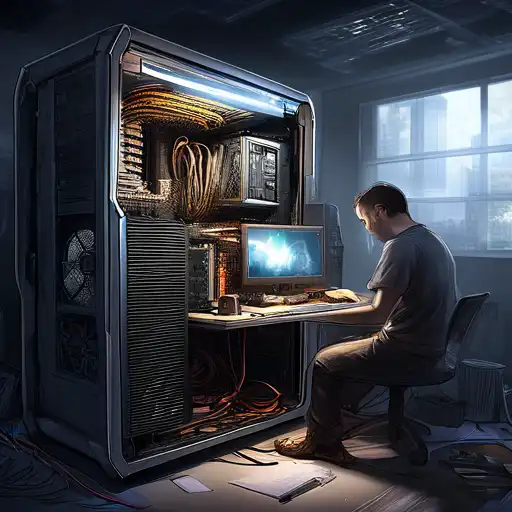Introduction to PC Building
Building your own PC can be a rewarding experience, offering both personal satisfaction and the opportunity to create a machine that perfectly fits your needs. Whether you're a gamer, a content creator, or just someone looking for a custom computing solution, this guide will walk you through the basics of assembling your own computer.
Why Build Your Own PC?
There are several advantages to building your own PC, including cost savings, the ability to customize components to your exact specifications, and the satisfaction of creating something with your own hands. Plus, you'll gain a deeper understanding of how computers work.
Essential Components for Building a PC
Before you start, it's important to understand the key components you'll need:
- Processor (CPU): The brain of your computer, responsible for executing instructions.
- Motherboard: The main circuit board that connects all components.
- Memory (RAM): Temporary storage that your computer uses to run applications.
- Storage (SSD/HDD): Where your operating system, applications, and files are stored.
- Power Supply Unit (PSU): Provides power to all components.
- Case: Houses all the components and protects them from dust and damage.
- Graphics Card (GPU): Essential for gaming and graphic-intensive tasks.
Choosing the Right Components
Selecting the right components is crucial for building a PC that meets your needs. Consider factors like performance, compatibility, and budget. Research each component thoroughly and read reviews to make informed decisions.
Step-by-Step Guide to Building Your PC
Now that you have all your components, it's time to start building. Follow these steps to assemble your PC:
- Prepare your workspace and ensure you have all necessary tools.
- Install the CPU onto the motherboard carefully.
- Attach the CPU cooler to prevent overheating.
- Insert the RAM into the appropriate slots on the motherboard.
- Mount the motherboard inside the case.
- Install the storage devices (SSD/HDD).
- Insert the graphics card into the PCIe slot if you're using one.
- Connect all components to the power supply.
- Close the case and connect peripherals like the monitor, keyboard, and mouse.
- Power on your PC and install the operating system.
Tips for First-Time Builders
Building a PC for the first time can be daunting, but don't worry. Take your time, follow instructions carefully, and don't force any components into place. If you're unsure about something, consult online resources or ask for help from more experienced builders.
Conclusion
Building your own PC is an exciting project that can save you money and give you a custom machine tailored to your needs. With the right preparation and a bit of patience, anyone can assemble their own computer. Remember, the key to success is research and careful assembly.
For more information on choosing components, check out our Guide to Choosing PC Components.
